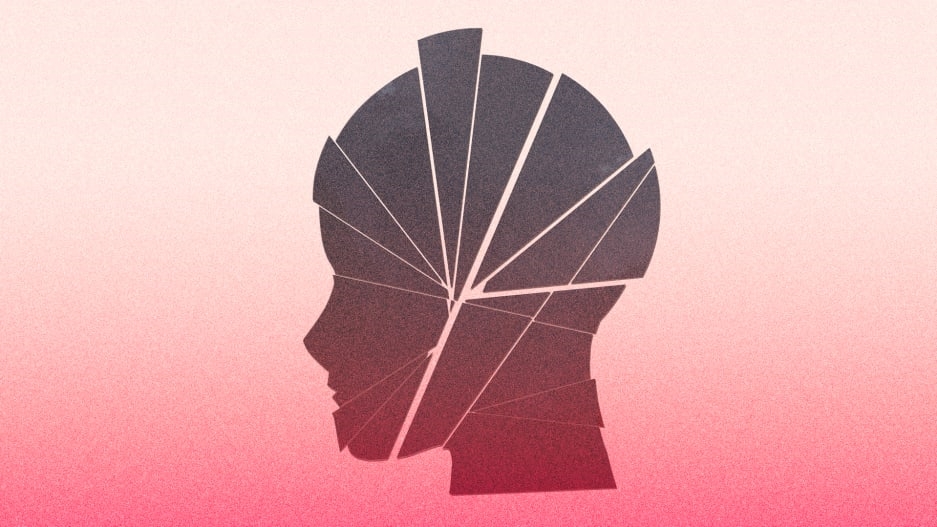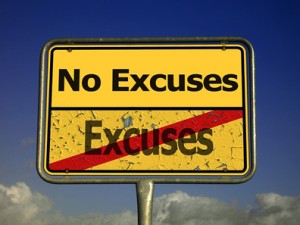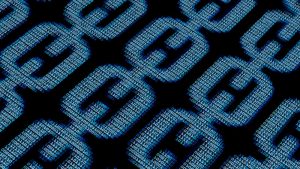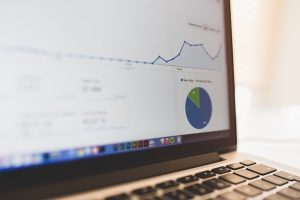
In the wake of George Floyd’s murder in May 2020, the term “white fragility” soared to prominence in American culture. Fueled by social media and corporate diversity initiatives, the nuanced arguments behind the term were quickly accepted as fact, particularly by certain progressives eager to demonstrate their engagement with fighting racism.
At its core, “white fragility” refers to the defensive and evasive responses many white people have to talking about race and racism.
Robin DiAngelo, a (white) educator, academic, and diversity specialist, originally coined the term in a 2011 article. It enjoyed wider success after the publication of her book, White Fragility: Why It’s So Hard for White People to Talk About Racism, in 2018. Then in 2020, requests for speaking engagements and training sessions began flooding her inbox. Her book rose to become the #1 bestseller on Amazon, selling up to 1.6 million copies. DiAngelo appeared on several late-night talk shows and news channels, while posts about #whitefragility went viral on social media platforms.
Since then, there have been a number of responses to DiAngelo’s work. Many find her live training sessions and speeches thought-provoking; others find a troubling condescension to people of color in her work (and in the work done by similar diversity training seminars).
One generally positive review in The New Yorker went further and noted that while the book was an interesting investigation, “[t]he conspiracy of racism is hardly invisible to people of color many of whom, I suspect, could have written this book in their sleep.”
I can’t say I disagree. Personally, I tend to be wary of any buzzwords that people cling to in moments of intense public scrutiny. DiAngelo undeniably presents significant insights rooted in her professional experience, but her argument doesn’t provide a complete picture. Nor is it solutions-oriented.
At a time when the nation is still beset with the very tangible effects of systemic racism – from police brutality to economic inequality–we can’t afford to spend so much time centering the highly intangible experience of “white fragility.”
The focus on “white fragility” is ultimately a distraction. And the term itself is just a shiny new wrapper for an idea most of us are already familiar with: specific groups being deeply uncomfortable about their role in both systemic racism and America’s history of white supremacy. But when people spend more time looking inward and punishing themselves for the “original sin” of racism, they take time away from the realities of racial inequality.
In other words, DiAngelo may have issued a loud wake-up call to some, but she has yet to prove it will get anyone out of bed.
It is of course still worth understanding what the term means and how DiAngelo constructs her argument–because it helps us understand why and where we might redirect our energies.
‘White fragility’ vs. ‘unconscious bias’
As stated above, “white fragility” describes the brittle emotional constitution DiAngelo has observed in white people talking about race and racism. “That’s not me,” “I would never say that,” “I don’t see color,” “why should anyone’s race matter?”: These are all examples of white fragility in action, according to DiAngelo.
The defensiveness itself is rooted in a sort of moral calculus that constructs racism as an intrinsically evil and socially undesirable trait, which in turn prompts many people to knee-jerkingly deny any association with it.
In this sense, white fragility is really just describing “unconscious bias” from a different vantage point and in a more specific context. It is an emotional (and largely irrational) response that people demonstrate when they go through the mentally complex process of acknowledging their own biases.
Again, this is not in itself a new idea (and I imagine many people, to some extent, experience mental discomfort when discussing troubling topics or examining their biases).
What is more interesting is DiAngelo’s argument that white fragility actually upholds white supremacy. “The most effective adaptation of racism over time,” DiAngelo claims, “is the idea that racism is conscious bias held by mean people.” By shying away from discussions of race–because of the assumption that they are not unconsciously racist or are somehow less influenced by racism than their peers–white people tacitly enable white supremacy to operate under the radar. In a society that is still largely segregated in terms of housing, education, and employment, white fragility acts as a comforting and sinister buffer that invisibly slows the advancement of racial equality.
Racial stamina and racial innocence
DiAngelo also defines other psychological mechanisms at play in these “fragile” reactions, such as “racial stamina,” “racial innocence,” and “racial solidarity”–all of which explain the failure to engage in uncomfortable discussions about race.
Racial stamina refers to the low levels of emotional energy that people appear to have in such discussions. Racial innocence refers to the idea that white people see themselves as deracialized (the ‘default’ race)–which means they don’t grow up in a world that projects behaviors or characteristics onto their personalities based on race. (Again, this is an interesting idea, albeit highly generalized, and DiAngelo doesn’t provide hard evidence for it beyond her experience in diversity seminars.) Finally, racial solidarity refers to the ways in which white people shrink from difficult conversations about race with other white people. Keeping silent and not rocking the boat become ways of reinforcing white supremacy as a sort of tribal advantage.
Attendees to DiAngelo’s public training sessions frequently comment on the power of her presentation. Many leave with a deeper understanding of their privilege. But the real question is: Does any of this introspection actually make a difference?
What about solutions?
Critics of DiAngelo’s work have rightly pointed out the absence of practical implications or solutions-oriented thinking. DiAngelo herself claims that jumping to solutions, rather than sitting with discomfort, is a foundation of white fragility. But the results–or lack thereof–speak for themselves.
For example, despite her continued success as a corporate speaker and diversity training specialist, many of the companies DiAngelo has advised continue to operate under woefully homogeneous leadership. In a 2020 New York Times Magazine article about DiAngelo, journalist Daniel Bergner interviewed a manager who attended one of her sessions at Levi’s’ corporate headquarters:
“I walked out with a heightened awareness of my white privilege,” the manager said afterward, “but I don’t know what Levi’s was trying to accomplish—this was a miss for me.” He had wide experience in the corporate world, and he commented, ‘Like at most companies, we’re lighter and lighter and lighter the higher you go.’ He didn’t imagine this changing anytime soon… (NY Times Magazine, 2020)
This is an all-too-common reaction at corporate diversity trainings, and perhaps should be taken with a grain of salt. But the manager’s conclusion is unavoidable: DiAngelo’s insights do not provide a roadmap for tangible change. And so it’s difficult to see what they are trying to accomplish. Unsurprisingly, a spokesperson for Levi’s later told Bergner that “the goal was ‘to get conversations started’.”
When Black people are dying, imprisoned, or at the mercy of unequal health and education outcomes, getting conversations started is simply not good enough. These issues are well-known to most white progressives–the primary target market of DiAngelo’s work–and it should not take one of their own proselytizing to get them to listen.
Moreover, DiAngelo’s approach feels like an unproductive exercise in self-flagellation. It’s easier for people to listen to a preacher denounce them as sinners than it is to understand the sins themselves. While DiAngelo undeniably has a wealth of experience, she has made her current fortune by tapping into Americans’ deep reserves of white guilt. But contrition isn’t a guarantee of behavior change or even sustained engagement.
If anything, the discomfort of DiAngelo’s approach might make it less likely for some people to come back to these issues. This has been a criticism leveled at many corporate diversity programs in general. Humans naturally avoid psychic discomfort. The underlying point – that white people need to get comfortable being uncomfortable–may be perfectly valid, but there’s no evidence it’s tactically effective. (In fact some researchers believe these trainings can actually activate stereotypes even further.)
There are also some critics who argue that the reasoning behind “white fragility” is actually insulting to Black people. John McWhorter, a professor of linguistics at Columbia University, has written passionately about the implications of DiAngelo’s work for Black people:
White Fragility is, in the end, a book about how to make certain educated white readers feel better about themselves. DiAngelo’s outlook rests upon a depiction of Black people as endlessly delicate poster children within this self-gratifying fantasy about how white America needs to think—or, better, stop thinking. Her answer to white fragility, in other words, entails an elaborate and pitilessly dehumanizing condescension toward Black people. (John McWhorter, The Atlantic, 2020)
For McWhorter, DiAngelo’s approach repeatedly avoids engaging with Black people’s experiences and the diversity therein. Her generalizations about the “right” way to talk about race and racism with Black people is predicated on a notion that communities of color are especially sensitive, damaged, and victimized groups.
Obviously, nothing could be further from the truth. In Daniel Bergner’s article, several attendees at DiAngelo’s trainings who were Black or Latinx reported the exact opposite: a lifetime of living in a racist society and experiencing discrimination has the effect of developing “thick skin.” “It hurts me to hear my students carry race like a disability,” said one Puerto Rican educator. “The risk is that they can’t see the potential to be successful.”
As good as DiAngelo’s intentions might be, her positioning of communities of color is deeply flawed (and it is noteworthy that her book does not pull in many current interviews or perspectives from nonwhite communities).
How we can do better
It’s easier to criticize than offer solutions, so I’ll close by offering some thoughts on what we can do better:
“White fragility” may be an interesting topic for people who believe in the effectiveness of diversity training, but as someone who’s worked in this space for years I can tell you: there is much harder work to be done.
Let’s learn that lesson this time, because we can’t afford any more distractions.
This article was adapted and reprinted with permission from Diversity Explained.
(28)
Report Post






